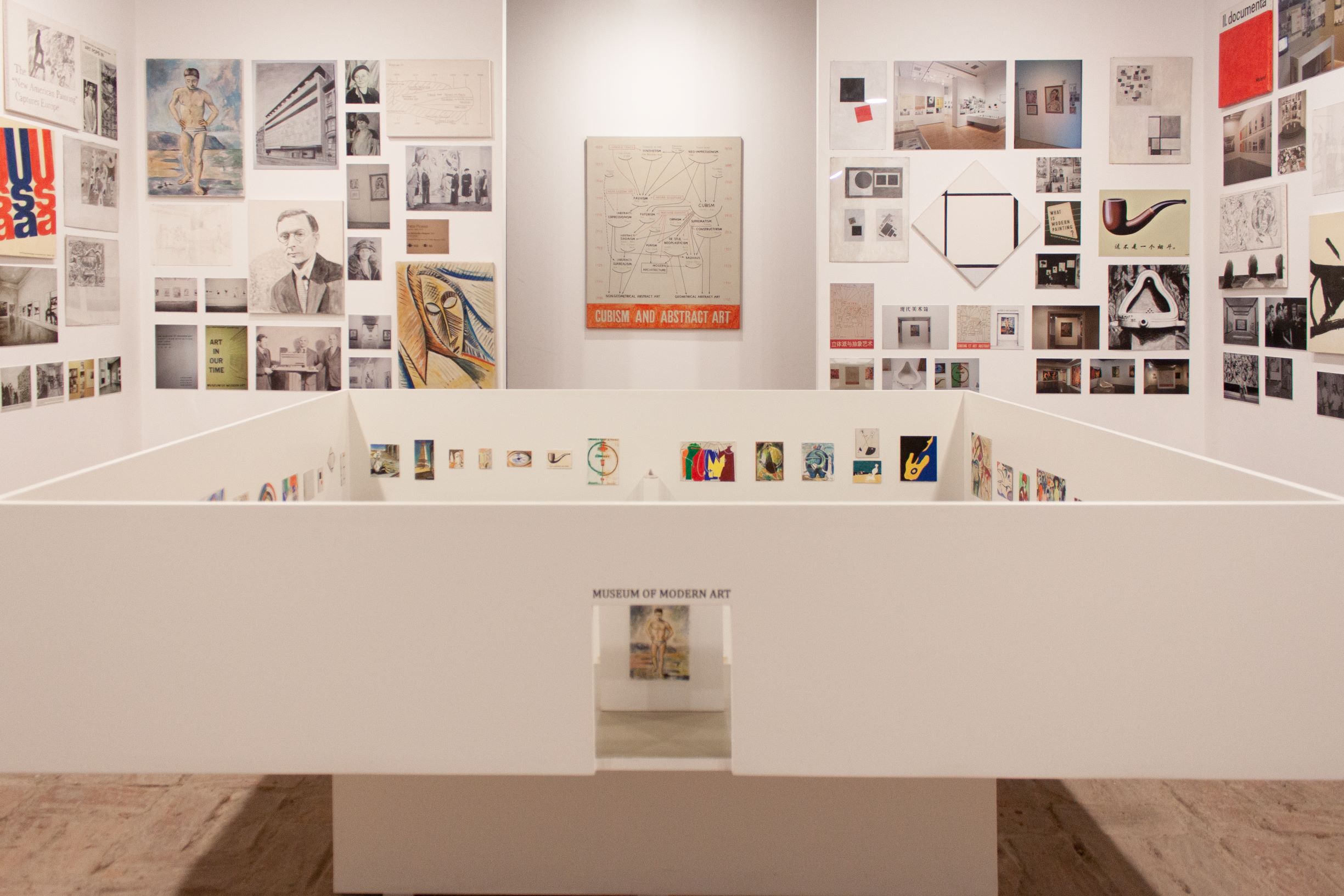
Museum of American Art in Prishtina
Opening: 17/6/2016, 20:00
Opening hours
Tuesday - Friday, 11 am - 4 pm
Saturday, 11 am - 2 pm
Address: Museum of American Art in Prishtina is located at Stacion – Center for Contemporary Art Prishtina, Henrik Bariç 23 Street, (the courtyard of the Ethnographic Museum in Prishtina), Republic of Kosovo.
The Museum of American Art is an educational institution dedicated to assembling, preserving and exhibiting memories primarily on the Museum of Modern Art in New York and its International Program of Circulating Exhibitions of American art. It is those MoMA exhibitions, some of them curated by Dorothy Miller, that helped establishing throughout the Western Europe the first post-war common cultural identity based on internationalism, modernism and individualism.
From the very beginning Museum of Modern Art was perceived, especially by the American Art lovers, as being almost entirely pro European and at the same time, indifferent toward the Americans. This was basically true, since at that time one could hardly find examples of American Art that would fit into the dominant modern narrative. The content and the structure of this narrative was based on “international movements”, whose roots we could trace to early 20th century modern art movements in Europe. The story was finally put together in mid ‘30es by Alfred Barr Jr. after his exhibition “Cubism and Abstract Art” as defined through his famous diagram and later through the “display narrative” of the Museum of Modern Art.
In order to deflect the criticism and balance this pro European bias, museum organized a series of exhibitions of contemporary American art curated by Dorothy Miller. At that time these exhibitions, beginning with “14 Americans” (1946), looked more like a side show, not yet ready to become part of the main narrative. But, it was these exhibitions of “Americans” at MoMA throughout the ‘40es and ‘50es, and the 1951 “Abstract Art in America” that for the first time introduced in the museum context Gorky, Motherwell, Pollock, Gottlieb, Rothko, Kline, de Kooning,… And when in the early ‘50es MoMA established The International Program of Circulating Exhibitions funded by the Rockefeller Foundation, with the aim of “promoting greater international understanding and mutual respect,” it was these artist that constituted the most attractive and most radical segment of the circulating exhibitions introduced to the European public. Among the exhibitions that came to Europe were: “Twelve Contemporary American Painters and Sculptors” (1953), “Modern Art in the USA” (1956), “The New American Painting” (1958). We could include here the American representation that was brought in a package at Documenta II (1959) under the auspices of the MoMA International Program.
Those were the strange years in art and in politics. On the one hand modern art had to be defended from the criticism from the right (Alfred Barr, Jr.: “Is Modern Art Communistic”) and on the other, it became apparent, especially to the people like George Kennan, that American modern art could be used in the cultural Cold War, as an expression of creativity and freedom on the West.
Regardless of the Cold War context of the MoMA International Program, from today’s prospective it might be more important to understand to what degree these Circulating Exhibitions helped establishing the first Post War common European cultural identity that was based on modernism (Abstract Art), individualism and internationalism. And, it was this Abstract Art in the ‘50es both in Europe and America that finally established the Alfred Barr’s narrative as the only legitimate History of Modern Art.
Thus, recently opened Museum of American Art is dedicated to assembling,preserving and exhibiting memories primarily on the MoMA International Program and its Circulating Exhibitions curated by Dorothy Miller and Porter McCray. It also has on display the “Museum of Modern Art” as an American invention defined by the two Alfred Barr’s historical exhibitions in 1936: “Cubism and Abstract Art” and “Dada, Surrealism and Fantastic Art” while the time line of its narrative ends in the mid ‘30es when it have been conceived.
The Museum of American Art in Prishtina consists of two parts.
One part relates to pre-WW2 story of the Museum of Modern Art. The second part relates to the first two decades after the war and the emergence of the American art on the world scene with exhibits about the MoMA exhibitions of American art between 1946-1956, the exhibition of Peggy Guggenheim Collection at the Venice Biennale 1948 and the MoMA International Program established in 1953, the 1955 MoMA exhibition of American art in Paris, 1956 in Belgrade and 1959 Documenta II in Kassel.
Museum of American Art in Prishtina is supported by: ERSTE Foundation, Trust for Mutual Understanding, Ministry of Diaspora of the Republic of Kosovo, The Austrian Federal Chancellery, Ministry of Education of the Republic of Kosovo, Kosova Foundation for Open Society, X-print and DZG.